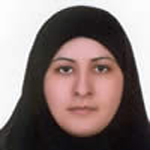Identify Dimensions & Barriers to Self-Development of Faculty Members' Competencies to Guide Thesis & Dissertations: A documentary study
Many organizations, in an effort to use their human resources entirely, ignore the way of thinking that managers should make decisions and employees should accept and implement them without asking, but imply encouraged self-management. Drucker referred to the 21st century as the challenge of self-management. Self-management means increasing confidence in the intellectual capacities and creative power of employees, but not their physical works. Therefore, the necessity of research about employees who has self-management ability resulted in a new principle as human resource empowerment. Today, empowerment is one of the tools of managers in innovation and decentralization in organizations. Empowerment is the belief that individuals' skills and knowledge improve and act upon. The present study aimed to identify the dimensions and barriers to faculty empowerment with the approach of increasing research self-development skills to improve the quality of graduate theses and dissertations.
This research, in terms of applied purpose, has been done as a documentary study using Sandelowski & Barroso (2006) weekly steps. Sample selection was prepared using the criteria for acceptance and non-acceptance of the Critical Assessment Skills Program (CASP). To achieve the purpose of the study, a regular and extensive review of research background was conducted. For this purpose, the databases of Google Scholar, Eric, Science Direct, Megairan, Civilica, Jihad Daneshgahi, Irandak, Alamnet and Noor databases were investigated. In this regard, by reviewing scientific studies conducted in this field between 2020 and 2021, 325 documents were identified that 37 documents were purposefully selected as a research sample and analyzed. Documents related to scientific studies were described in the research context in the form of deductive concepts and themes in the form of documentary study methods.
Findings showed that the dimensions of empowerment included self-efficacy, effectiveness, meaningfulness and trust. Empowerment barriers also consisted of structural barriers, environmental barriers, behavioral barriers, and managerial barriers.
Among the dimensions of empowerment of faculty members, the dimension of meaningfulness received more attention from researchers, which indicated that faculty members pursue important and valuable goals, and on the contrary, the dimension of trust has received less attention from researchers. Also, researchers reported significant relationships between job enrichment and empowerment. Conversely, between performance-based reward and empowerment, and also between role modeling and empowerment, the researchers came to the conclusion that there was no significant relationship, and in fact, these two categories of dimensions in the studied society did not show a significant relationship with empowerment. Also, the variables of job enrichment and participatory management affect the empowerment variable. The results of researches implied that among the dimensions of empowerment of faculty members, two dimensions of meaningfulness have received more attention from researchers, and the dimensions of self-efficacy and autonomy have been placed in the next ranks. On the other hand, the trust dimension was ranked the lowest compared to other dimensions. Perhaps it can be interpreted that the members of the academic faculty of the university valued their purpose or career goals, and the university lecturers implied their mental and psychological strength in their activities; including research and teaching, and also had a sense of personal importance. The activities they perform were important in their value system and they considered a sense of purpose and mission for themselves, besides only obtaining rights and benefits seem did not create a sense of meaning in them, but there were more fundamental personal and humane ideals and standards for them, which with their activities were connected and made the faculty members more stable in the face of shortcomings. As a result, it made them examine the general situations and educational issues with new initiative and thinking, and in addition to helping the students and their academic progress. They aroused the religious spirit and national identity to preserve them in the students; and also caused fundamental research and the combination of knowledge; and provided its practice and application. Since the dimensions of self-efficacy and autonomy were also in the next ranks, it can be stated that the university faculty members were aware of their abilities and skills and believed that they can perform their duties and responsibilities successfully and had the right to choose in implementation, and systematize their related activities. On the other hand, the low level of trust was investigated from two perspectives. First, the university lecturers did not feel the necessary and sufficient trust and security towards the behavior of others (teachers or other colleagues) and they thought that they were not treated fairly and equally and that other members hindered their growth and progress. In fact, the university provided a trusting environment. Second, the faculty members did not believe in the dimension of trust, that they did not accept trust, which caused practical success, favorable atmosphere, participation in decision-making, etc. They did not believed in as Bugler (2004) Saied the empowerment to be effective, so it needs to be reliable to be effective which unfortunately according to the results of this research, this dimension was considered little importance among university faculty members. Since there was no research question like the researched question in similar studies, consequently it cannot be said which of the researches were consistent or not.
- حق عضویت دریافتی صرف حمایت از نشریات عضو و نگهداری، تکمیل و توسعه مگیران میشود.
- پرداخت حق اشتراک و دانلود مقالات اجازه بازنشر آن در سایر رسانههای چاپی و دیجیتال را به کاربر نمیدهد.




